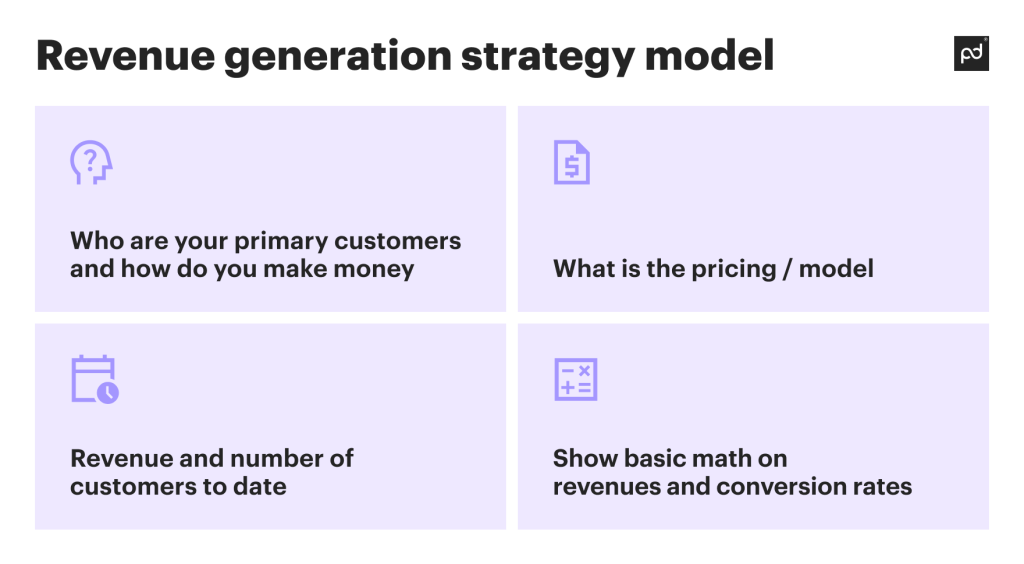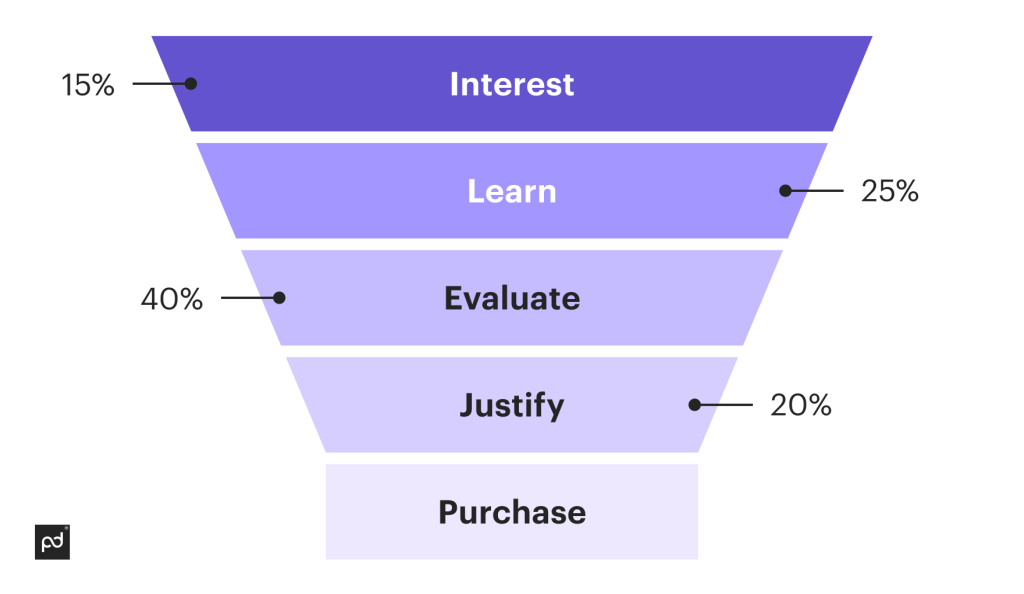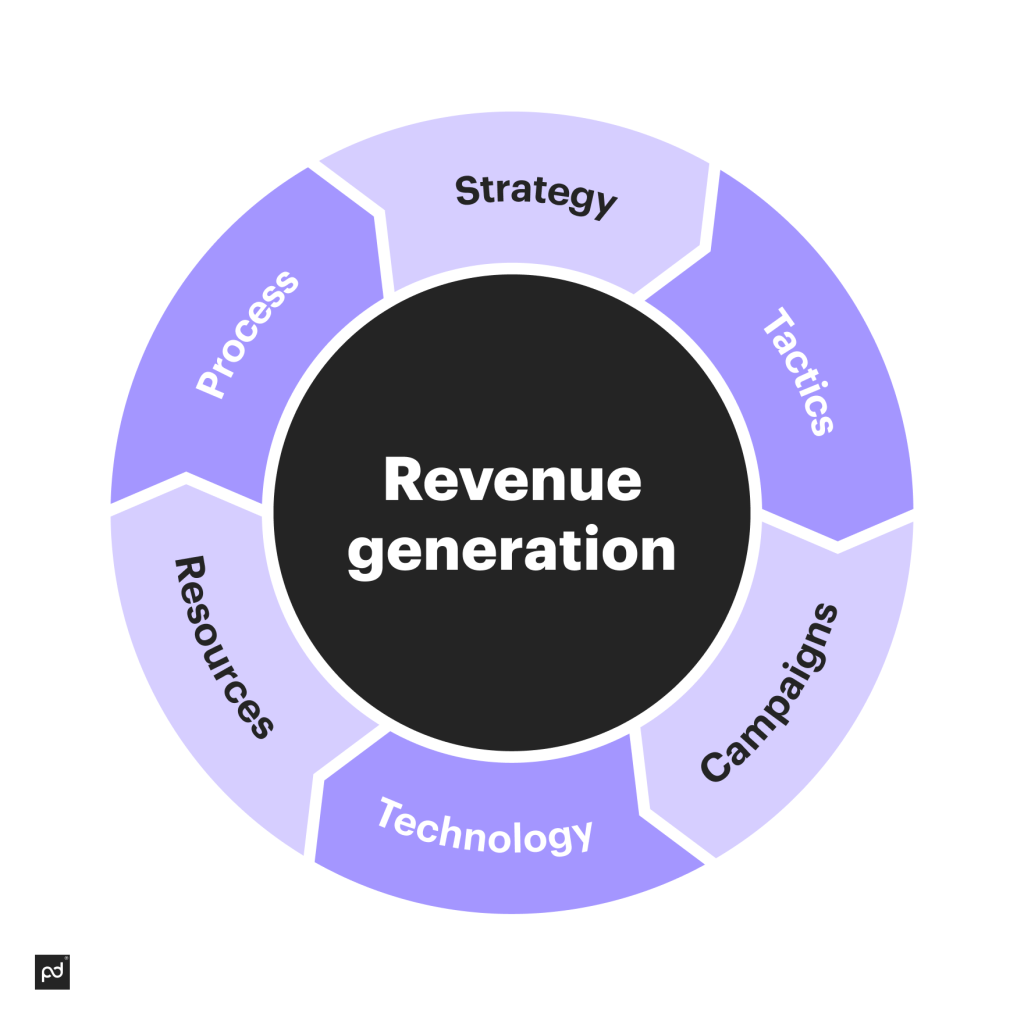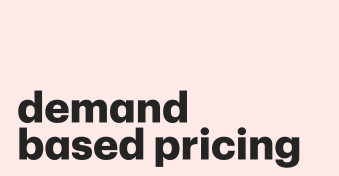Revenue generation, you’ve likely heard the term, but perhaps don’t know all the intricacies behind it.
On the surface, revenue generation is an imperative part of the marketing strategy for long-term success and sustained growth for any business.
Underneath the surface, it’s about having a solid business model and understanding your metrics.
What is revenue generation?
Anything that drives money into the business falls under the umbrella of revenue generation. This isn’t limited to sales.
It’s all part of the machine of your business, including but not limited to: lead generation, marketing, product, market perception, customer acquisition, and customer retention.

Seems like a lot of moving pieces? It is.
This is why understanding the inner workings of your business is the best way to create your best revenue generation strategy.
Hitting revenue goals is interlinked with customer satisfaction.
Benefits of a strong revenue generation strategy
Having consistent revenue is the beating heart of any successful business. If you’re not sure where to begin, start with an internal audit:
- Do you understand your customer needs?
- Who is your target audience?
- What marketing campaigns do you have in place to promote new products?
- Are your sales team and marketing team aligned and working together for cross-selling and upselling opportunities?
22.1% of salespeople said the biggest benefit of sales and marketing teams being more aligned was it helped them close more deals.
Remember: Content marketing is a huge tool for generating revenue.
Let’s get down to some of the primary strategies driving revenue, their tactics, and benefits when it comes to picking your revenue model and hitting KPIs.
Sales funnel optimization
If your sales funnel isn’t operating efficiently, your revenue won’t be consistent.
Understanding your target market and putting them on a journey that makes the most sense for customer success is key in setting up your sales funnel to get them from a cold lead to a closed deal.
Here’s how.
57% of B2B companies identify ‘converting qualified leads into paying customers’ as a top priority.

Key tactics:
- Nurture your leads. When potential customers come in, don’t let it go unnoticed. Have systems in place with email, social media, and sales for a built-in and targeted follow-up system.
- Minimize churn. Keeping your leads engaged is only a part of the process. Having methods in place to personalize your approach mid and bottom funnel is a good way to keep them warm and through email marketing.
- Increasing conversion. Slow and steady wins the race. Even small conversion adds up, over time. Pay attention to any potential roadblocks where you may be losing customers at the final stages, such as poor responsiveness, confusing prices, or too complex of a buying process.
Once you go through some trial and error and optimize your sales funnel, an increase in closed deals and higher revenue is right around the corner.
Market expansion
Are there untapped markets you’d love to explore? Great!
Before you do, it’s important to thoroughly research your area(s) of choice to best understand the demographic.
Key tactics:
- Research. As mentioned above, you need to do some serious digging before you launch, so it doesn’t backfire on you. Look into the new market’s pain points, competition, and any cultural differences or barriers that may affect your product.
- Diversify. Adjust your product to meet the needs of your newly targeted consumer base in order to increase lead generation.
Expanding into new markets can be an effective way to generate revenue. Just make sure to do your homework first.
Customer retention and recurring revenue
While looking to new horizons can be all well and good, don’t let it lead to neglecting your existing customers.
Customer retention is a key part of any successful revenue plan.
After all, it is effectively more expensive to acquire new customers than it is to maintain the happiness of your current ones.
Also, pssst, your existing customer base can help you spread brand awareness by giving you referrals. So don’t ignore them!
Key tactics:
- Incentives. Consider adding bonuses as goodies to enhance customer relationships, like loyalty and rewards programs for continued subscription or repeat purchases.
- Personalize. Have them in your email list? Good! Tailor your emails to target people based on their purchase history or needs.
- Tiered subscriptions. If you’re a business that operates on a subscription model, consider adding tiers. Perhaps a free, mid, and top level plan based on consumer needs. Nothing says recurring revenue generation like a monthly subscription.
Pricing strategies
Going once, going twice…sold!
How you sell your products and services is a major factor in sales volume, profit margins, and, you guessed it, revenue growth.
90% of sales and marketing professionals point to a number of disconnects across strategy, process, content, and culture.
We already dug deep and did a whole blog on pricing strategies, if you’d like to take a look here.
To hit the highlights, here’s some of the top pricing strategies for revenue growth and their best use cases:
- Value-Based Pricing: focus on the value your product or service brings to the customer. This works best if you have tiered pricing, so you can layer in why each higher cost is worth it.
- Discounts: While important not to overdo, the occasional discounts or sales are a good way to keep customers happy. Think yearly holiday sales, or bulk-purchase discounts.
- Dynamic Pricing: Offers the most flexibility when it comes to fluidity of pricing based on the competition, consumer needs, and market fluctuations.
How do you calculate revenue generation?
If you’re not already familiar, CPQ (Configure, Price, Quote) is a tool that can help you when it comes to, well, configuring prices and quotes.
While it’s primary function is not revenue generation, CPQ can help maximize your workflow and lead to time saved and deals closed faster.

Calculating revenue generation can be done by multiplying the price by the amount sold.
Whether it’s a product, service, or subscription.
You can take a look at both the short-term and long-term by narrowing down the window of revenue per quarter, month, week, or even year.
Using CPQ also cuts down on the risk of human error from long periods spent in manual data-entry when it comes to calculating revenue generation.
Having accuracy for numbers and MoM (month-over-month) and YoY (year-over-year) comparisons is vital to forecast your future revenue and determine how well you’re doing in the past and present to adjust your methods as necessary.
By using PandaDoc, UpTime Health reduced their sales cycle by up to two weeks and saw a 20% close rate improvement.
Now that’s impressive!
Without revenue generation, businesses wouldn’t exist. Revenue is the oil that makes the wheel go ‘round.
Knowing what it is, how to calculate it, and how to maximize it through the use of effective tools and solutions like PandaDoc CPQ can be the difference between a struggling business and a thriving one.
One way to utilize CPQ for streamlined revenue is to use the data to create a sales pipeline.
That way the steps from customer acquisition to close is laid out clearly.
Sound too good to be true?
Take a test drive and see for yourself with our free 14-day trial with PandaDoc CPQ for HubSpot.
Revenue generation is the core of any successful business, regardless of industry.
With the base understating and implementation of the right pricing model, you can drive significant revenue growth.


